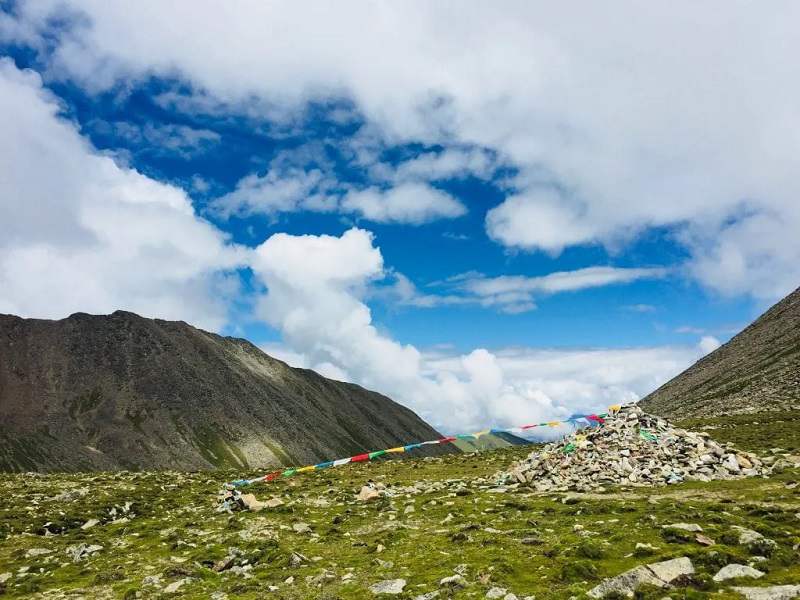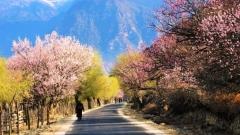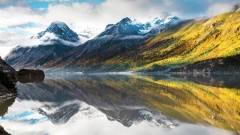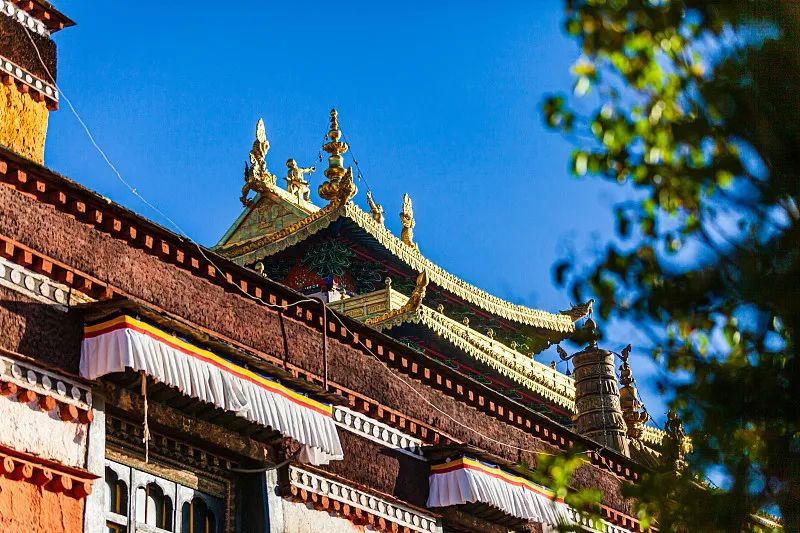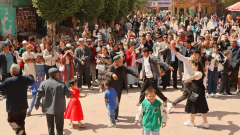For adventurous travelers and spiritual seekers alike, the Ganden to Samye Trek is often described as Tibet’s most classic pilgrimage route. Linking the sacred Ganden Monastery with Samye, Tibet’s first monastery, this trek combines spectacular natural landscapes with deep cultural and religious meaning. Covering a distance of about 80 kilometers, the journey takes trekkers through high mountain passes, alpine lakes, nomadic pastures, and sacred valleys, offering both physical challenge and spiritual enrichment.
1. Historical and Spiritual Significance
The trek is much more than a hike—it is a spiritual journey that mirrors centuries of Tibetan pilgrimage tradition.
-
Ganden Monastery, founded by Je Tsongkhapa in the 15th century, is one of the three great Gelugpa monasteries near Lhasa. It is a place of profound Buddhist learning and practice.
-
Samye Monastery, established in the 8th century, holds the distinction of being Tibet’s very first monastery, symbolizing the beginning of Tibetan Buddhism as an institution.
-
The trail itself is considered a symbolic path of enlightenment, with pilgrims retracing the footsteps of monks and devotees who for centuries walked this same route as an act of devotion.
2. Trekking Route Overview
The Ganden to Samye trek is usually arranged as an 8-day journey, balancing cultural sightseeing in Lhasa with challenging but rewarding trekking days. Here’s how the route unfolds:
-
Day 1: Arrival in Lhasa (3,650m)
Travelers land in Tibet’s capital and begin acclimatizing to the high altitude. The rest of the day is usually for rest and light exploration. -
Day 2: Downtown Lhasa
A cultural immersion day visiting Tibet’s most iconic landmarks — the Potala Palace, spiritual Jokhang Temple, and the bustling pilgrimage circuit of Barkhor Street. -
Day 3: Lhasa → Ganden Monastery → Heibu Village (Camp at 4,400m)
Drive to Ganden Monastery, one of the great Gelugpa institutions, before setting out on foot to Heibu Village, where the first camp is set up in scenic highlands. -
Day 4: Heibu Camp → Shuga-la Pass (5,284m) → Descent → High Camp (approx. 5,100m)
A challenging day crossing Shuga-la Pass, the highest point of the trek. The trail offers sweeping alpine views before descending to camp near 5,100 meters. -
Day 5: High Camp → Chitu-la Pass (5,228m) → Foothill Camp (3,700m)
Another high pass crossing at Chitu-la, followed by a long descent into greener valleys where the foothill campsite awaits. -
Day 6: Foothill Camp → Changda Village → Longguo Village → Samye Monastery (3,600m)
The trek winds through traditional villages before reaching the historic Samye Monastery, Tibet’s first Buddhist monastery. -
Day 7: Samye Monastery → Return to Lhasa
Explore Samye in the morning before returning by vehicle to Lhasa, retracing the cultural heart of Tibet. -
Day 8: Lhasa → Airport
Departure day, marking the end of an unforgettable blend of adventure and pilgrimage.
3. Highlights of the Trek
What makes the Ganden to Samye trek so unforgettable is the balance between cultural depth and natural beauty. Each day offers unique experiences:
-
Cultural Wonders in Lhasa
The journey begins with world-renowned landmarks — the Potala Palace, Jokhang Temple, and Barkhor Street. These sites provide the spiritual and historical foundation for the pilgrimage ahead. -
Ganden Monastery: A Spiritual Starting Point
Standing high above the Kyi-chu Valley, Ganden Monastery is where the trek begins. Pilgrims and trekkers alike feel the connection between ancient Buddhist traditions and the raw Tibetan wilderness. -
High-Altitude Passes with Epic Views
Crossing Shuga-la Pass (5,284m) and Chitu-la Pass (5,228m) are the most physically demanding parts of the trek. The sweeping views of alpine lakes, snow-clad peaks, and vast valleys reward every step of the climb. -
Remote Campsites Under the Stars
Nights are spent camping near villages or in wild highland meadows. With clear skies, trekkers often witness dazzling constellations, adding to the spiritual feel of the journey. -
Village Life and Tibetan Hospitality
Passing through Heibu, Changda, and Longguo villages allows trekkers to glimpse authentic Tibetan rural life. Encounters with local herders and farmers make the trek more than just a physical adventure — it becomes a cultural exchange. -
Samye Monastery: The Pilgrimage Fulfillment
The trek concludes at Samye Monastery, Tibet’s first Buddhist monastery. Its unique mandala layout and spiritual importance symbolize the completion of both the physical and inner journey.
4. Difficulty and Preparation
The trek is moderately strenuous and best suited for those with prior trekking experience. Challenges include:
-
High altitude: The trek involves multiple passes over 5,000 meters, requiring proper acclimatization in Lhasa or Ganden beforehand.
-
Physical endurance: Daily hikes last 6–8 hours, often on steep or rocky terrain.
-
Remote conditions: Campsites are basic, and facilities are minimal, meaning trekkers must be prepared for rustic conditions.
Preparation tips:
-
Spend 2–3 days in Lhasa or Ganden acclimatizing.
-
Pack lightweight, high-quality camping gear.
-
Bring altitude sickness medication if recommended by a doctor.
-
Travel with an experienced guide or organized group for safety and navigation.
5. Best Time to Trek
The ideal seasons are:
-
Late Spring (May–June): Warm weather, clear skies, and meadows in bloom.
-
Autumn (September–October): Crisp air, golden landscapes, and stable conditions.
Monsoon season (July–August) can bring heavy rain, while winter (November–April) is too harsh for trekking due to snow and cold.
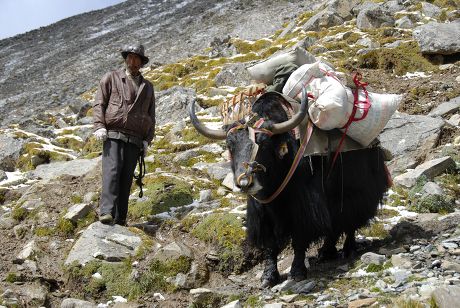
Chitu La Yak
6. Cultural Encounters
One of the trek’s unique features is the chance to interact with Tibetan nomads and pilgrims. Travelers often witness traditional yak-herding life, share butter tea with locals, and observe prayer rituals along the way. The experience is both cultural and spiritual, deepening understanding of Tibetan Buddhism and lifestyle.
7. Why Choose the Ganden to Samye Trek?
-
It connects two of Tibet’s most important monasteries, encapsulating the essence of Tibetan Buddhism.
-
It offers diverse landscapes—from alpine passes to fertile valleys—in just a few days.
-
It provides both physical adventure and spiritual depth, making it ideal for trekkers seeking meaning beyond the trail.
Conclusion
The Ganden to Samye Trek is not just about reaching a destination—it’s about the journey itself. Traversing high mountain passes, exploring sacred lakes, and ending at the birthplace of Tibetan monasticism, trekkers experience both natural wonder and spiritual awakening. Whether you come as a pilgrim or an adventurer, this trek offers a profound glimpse into the soul of Tibet, leaving memories that last a lifetime.




